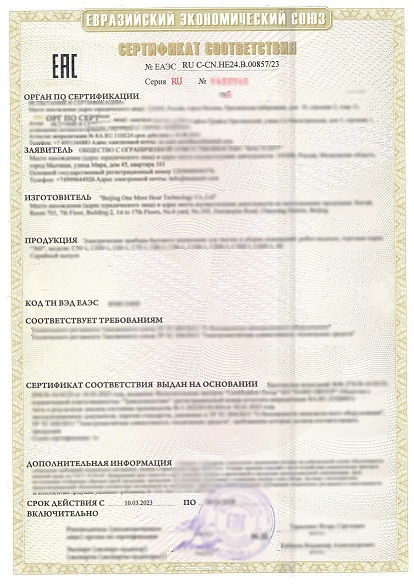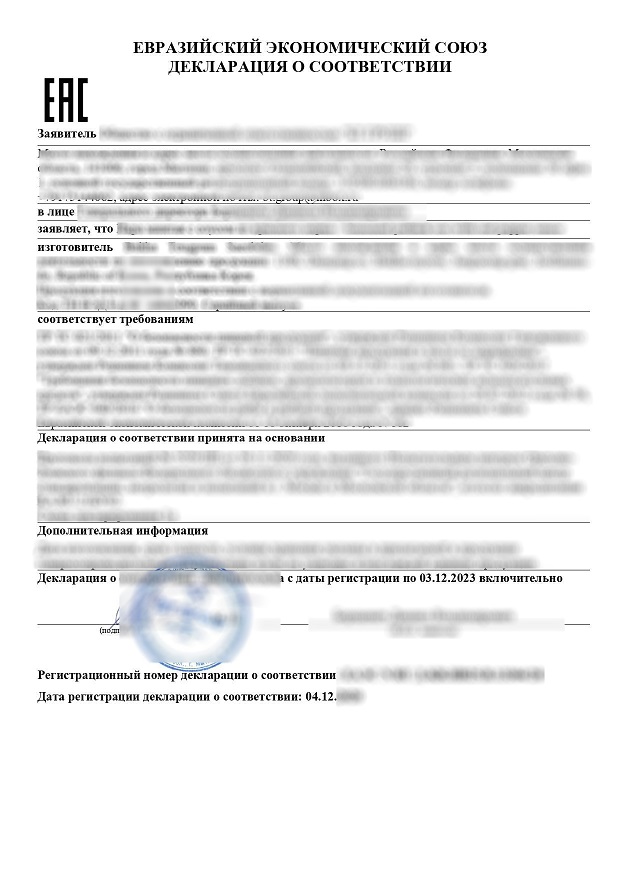
EAC Certification:
The EAC certificate issued by the Eurasian Economic Union (EAEU) serves as an official confirmation of product compliance with the standardized technical regulations of EAEU member states. With this certificate, products meeting these regulations can be freely distributed and marketed throughout the customs territory of EAEU member states.

EAC Declaration:
The EAC Declaration of the Eurasian Economic Union (EAEU) is an official document affirming that products fulfill the basic criteria outlined in the technical regulations of the EAEU. This declaration is issued by the manufacturer, importer, or an appointed representative and is recorded in the official registry. Products validated through this declaration are authorized for unrestricted distribution and sale throughout the customs jurisdiction of EAEU member states.

The difference between EAC Certificate and EAC Declaration:
The EAC certificate necessitates a thorough evaluation by a certification body accredited within an EAEU member state before issuance. This assessment relies on technical documentation, internally generated test reports, or reports from accredited testing laboratories, alongside on-site manufacturing audits. The certificate is printed on a specialized form containing multiple anti-counterfeit features, authenticated by the signature and seal of the accrediting body. Typically, it's reserved for intricate products subject to rigorous regulatory scrutiny.
In contrast, the EAC Declaration is a self-declaration of conformity by the manufacturer, importer, or authorized representative to the minimum requirements of EAEU technical regulations. Unlike the EAC certificate, it's directly issued by the applicant. Tests and analyses are conducted either by the manufacturer or, occasionally, by a laboratory. The declaration, usually on standard paper, must be registered in the unified EAEU register by an accredited certification body from an EAEU member state.
The difference between EAC and TR ZU or TR CU:
EAC stands for Eurasian Conformity and represents a conformity assessment system similar to the European CE procedure. The EAC conformity mark indicates that products comply with all the technical regulations of the EAEU, essential for their importation and sale within the EAEU area.
TR CU, which stands for "technical regulations of the customs union," is equivalent to TR ZU, translated as "technical regulations of the customs union" in English. TR EAEU refers to "technical regulations of the Eurasian Economic Union."
In 2011, the uniform technical specifications, also known as technical regulations of the customs union or TR CU, were implemented across Russia, Belarus, Kazakhstan, and later Armenia and Kyrgyzstan. Similar to the CE-Mark in Europe, a unified conformity mark for the customs union was introduced, comprising the stylized letters "EAC," representing "Eurasian Conformity."
Consequently, terms like "EAC certificate" and "TR CU certificate" are interchangeable. The accurate and comprehensive term for conformity assessment is "confirmation of conformity with the technical regulations of the customs union." However, due to its length, it's often abbreviated to "TR CU Certification" or "EAC certification." Strictly speaking, using "certification" alone is inaccurate, as there are two mandatory conformity assessment procedures: the EAC certificate and the EAC declaration.
Validity of Certificate or Declaration:
For serial deliveries, the validity of the document extends up to either 3 or 5 years, contingent upon the requirements outlined in the respective technical regulations. Alternatively, an EAC certificate can be requested for a single year, for a one-time shipment, or for batches tied to a specific contract.
* At the request of the manufacturer, a certificate can be issued instead of an EAC declaration. However, an EAC certificate cannot be replaced by a declaration.
The following car parts are subject to EAC Certification:
- Engines
- Car Tires
- Car Electrics
- Catalytists
- Silencers
- Injection Systems
- Steering Systems
- Wheel Suspensions
The following car parts are subject to EAC Declaration:
- Starter Battery
- Sparking Plugs
The following procedures are prescribed for an EAC Proof of Conformity of Motor Vehicles and Car Parts:
- EAC Certification
- EAC Declaration
- Vehicle Type Approval
- Individual Operating Permit for Motor Vehicles
The following documents and records are required for EAC Certification in accordance with Technical Regulation TR CU 018/2011:
- Detailed Product Description
- Original Product Name
- Customs Tariff Number
- Test Records
- Technical passport
- Operating Maual
- Technical Drawings
- Technical Data Sheet
- Certificates such as CE, ISO, DIN, EAC, GOST or CB
Updated on: Sunday, May 12th, 2024